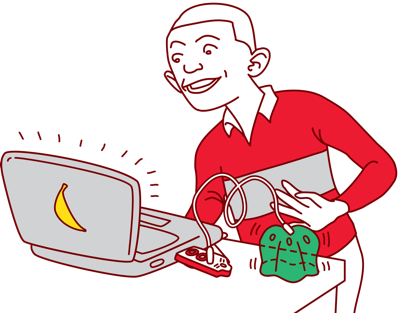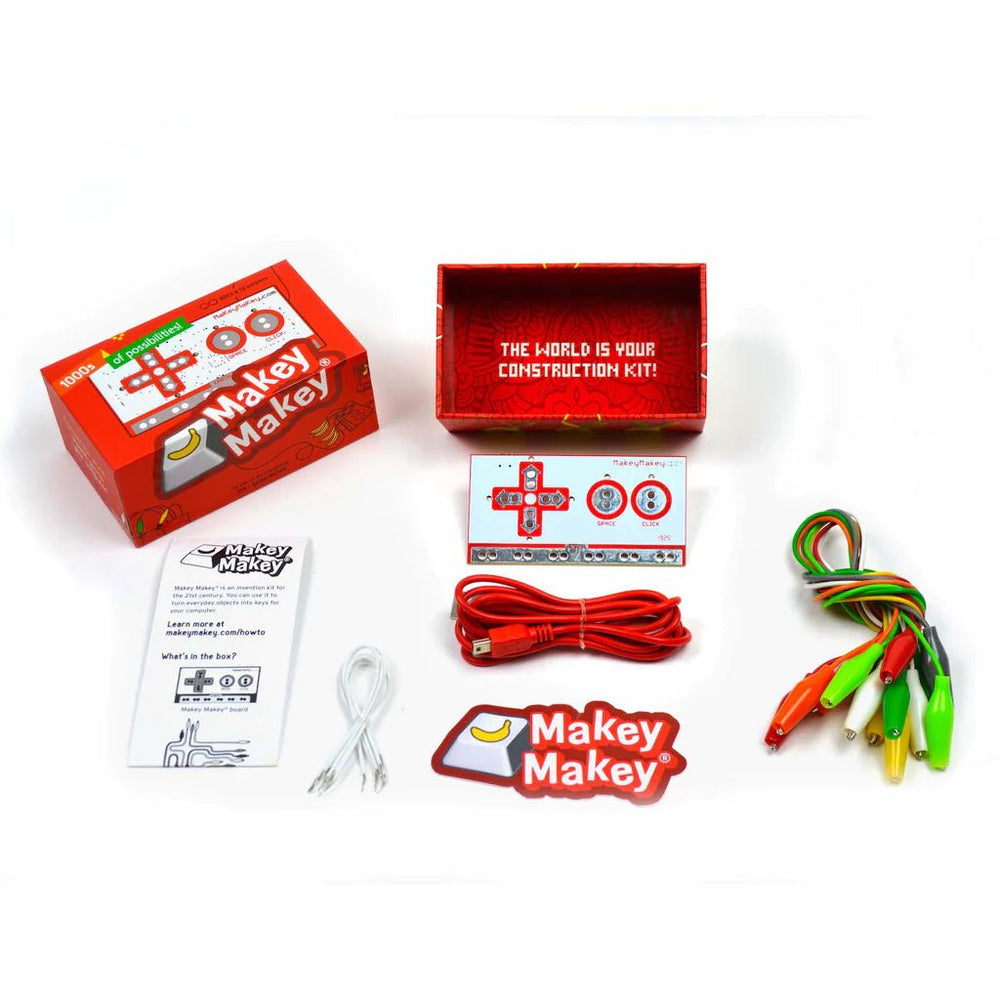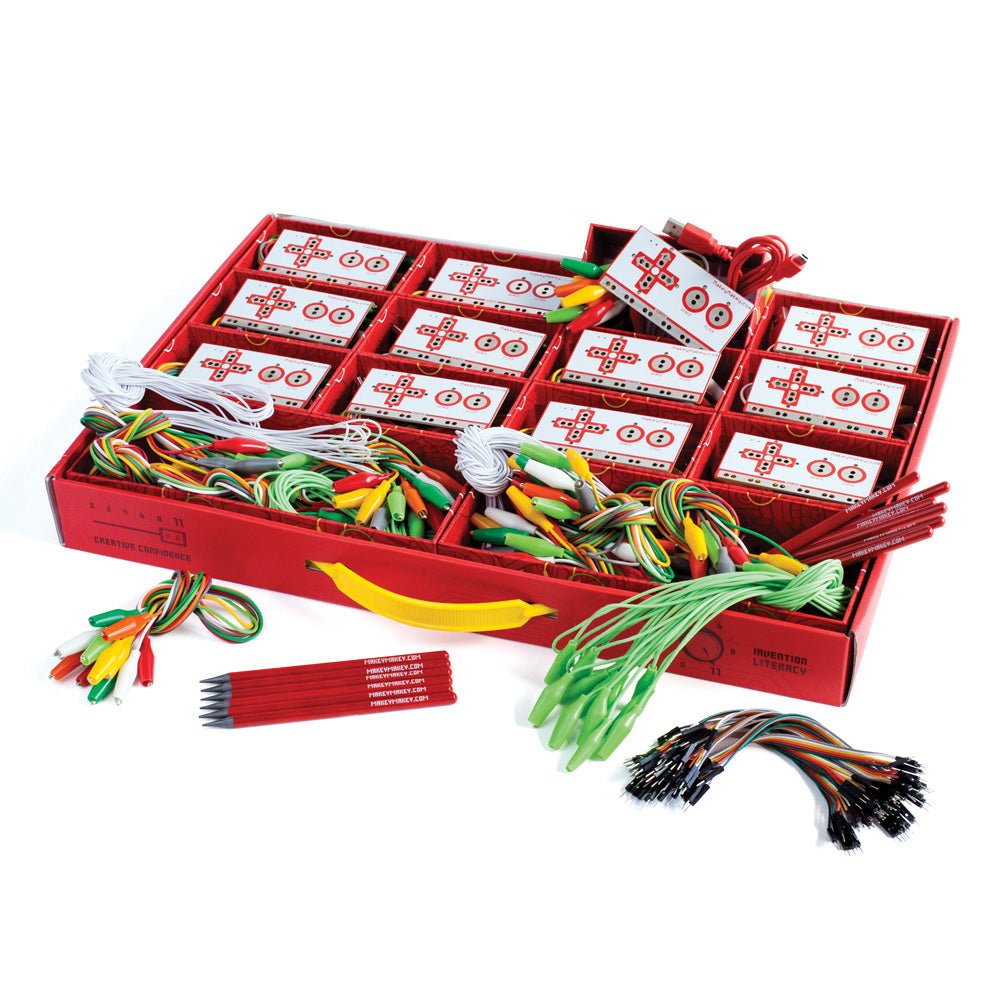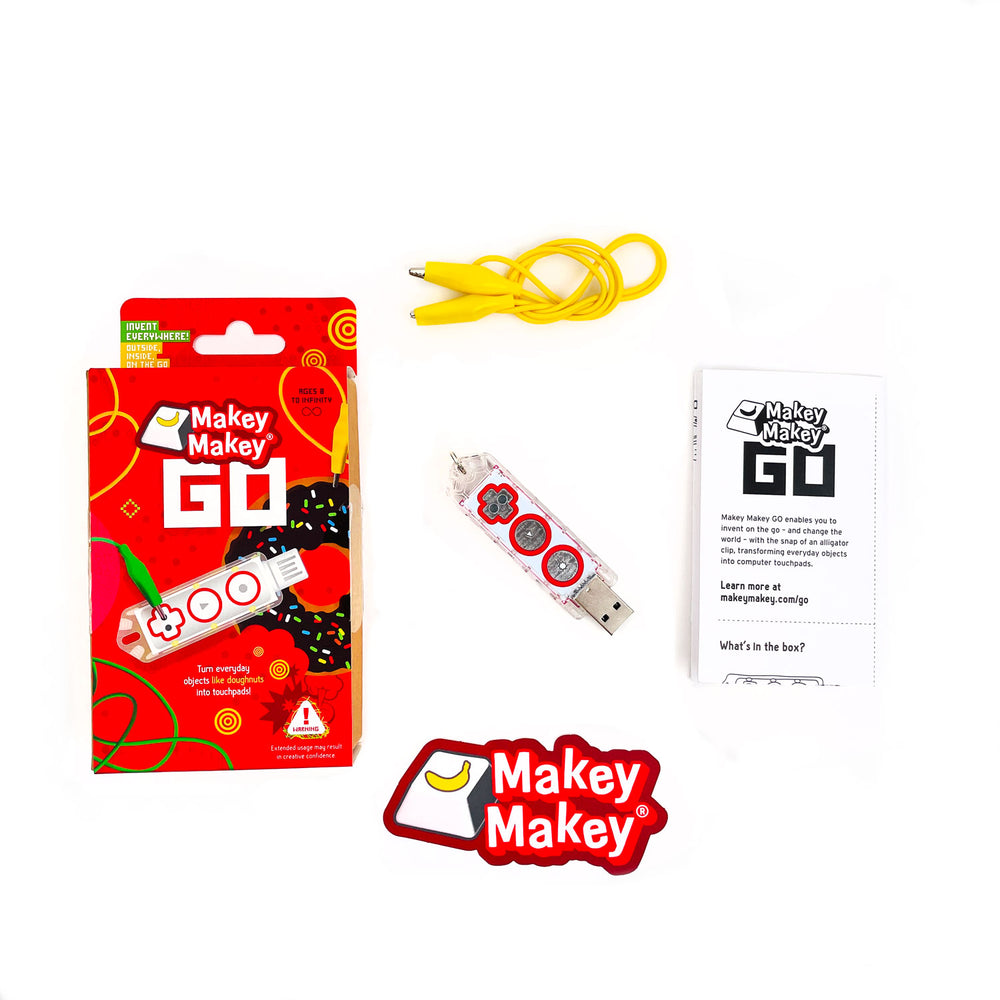"Cashing In" on Design Thinking: An Epic Collaboration Project
Accessibility Series
"Cashing In" on Design Thinking

In January, we noticed some impressive tweets about an assistive technology design challenge put forth to a senior high school math class. As we dug into the story, we learned that this great idea was spawn from a collaborative team of 6 teachers! As problem solving and collaboration are some of the hardest qualities to instill in students, we knew we needed to find out more about these epic teachers. Find out more about how they used this project to share empathy and design in their local high school.
Meet the Teachers!

|
From left to right in the photo: |
||
|
Zach Taliaferro |
Computer math teacher |
|
|
Katie Moran |
ITRT, project organizer |
|
|
Jennifer Showalter |
ITRT, Makey Makey instructor |
|
|
Bethany Deputy |
ITRT, Makey Makey instructor |
|
|
Laura Fox |
Special Education teacher |
|
|
Barbara Eanes |
Special Education teacher, initiated the project |
|
- Katie: I am an Instructional Technology Resource Teacher (ITRT), which is comparable to Instructional Technology Coaches in other regions. Teachers reach out to me when they want to incorporate new technology into their classroom or workspace. I support teachers in learning how to use the technology, but I also help teachers with their project/lesson design and implementation.
- Bethany, and Jennifer: These are my co-workers and fellow ITRTs (in our division, we are blessed to have 19 ITRTs on our staff!); however, these ladies also hosted numerous regional Makey Makey Invention Literacy Workshops from our central office. I attended their session in hopes of learning something new, but I walked away with the cash register idea to meet the needs of Barbara and Laura’s cafe. During the design process, Bethany and Jennifer took the lead teaching Makey Makey to the students and providing mentorship during the building process. Additionally, Jennifer took the lead working with the SPED students; she taught them how to use Makey Makeys in preparation for the Prototype Demo and the finalized register to come into the cafe.
- Barbara and Laura: I am a special education teacher. Laura Fox, a fellow special education teacher, and I started TempTAtions Coffee. We work with students diagnosed with Multiple Disabilities, Autism, and Intellectual Disabilities. Mrs. Fox and I worked with our students to come up with ideas to share with Zach’s class, opened the cafe for Zach’s students to observe and experience, talked with the math students about their designs and our wishes, and brought our students to look at the prototypes to offer suggestions and allow our students to experience the prototypes to see what was working and what was not.
- Zach: I am a second year math teacher, and the Computer Math that I teach was involved with this project. This class introduces students to basic programming concepts through Scratch, Javascript, and Google Sheets. Katie and I connected when she came to my room to help with a tech support ticket. She saw that I had a Scratch program on my computer screen, and we talked for a bit about how Scratch was used in my classroom. This chance meeting is what eventually led to my and my students’ involvement in this project.
Tell us a little about your school
Zach: Turner Ashby is a high school with around 1000 students in the Shenandoah Valley. We are one of four high schools in Rockingham County. The mixture of farmland and college campuses in the surrounding area leads to a diverse student population. In my Computer Math classroom, around 80-90% of my students are enrolled at the Massanutten Technical Center, studying subjects including Welding, Nursing, and Cybersecurity.
This is such a beautiful project on making an accessible cash register for other students. How did you come up with the idea?
Katie: Initially, Barbara asked me to help her find a highly customizable cash register app to help her students. She envisioned finding a solution that would mimic a real-world workplace setup. I did not have an easy, ready-to-go answer for her.
Meanwhile, I attended Bethany and Jennifer’s Makey Makey Invention Literacy Workshop. During the presentation, they shared a TEDx Talk, “The students who hacked STEM education, Tom Heck, TEDxGreenville”, and I realized this was the answer I needed. (actually, here’s a video of me brainstorming this project at the end of the Makey Makey Invention Literacy Workshop.) I asked Barbara if she would be interested in letting math students in her school building “Shark Tank” some possible accessible cash registers for her. I approached Zach the computer math teacher about this project, and he liked the idea of challenging his students with this project.
Finally, I pulled together our team: special education teachers, math teacher, and ITRTs to begin planning details of the project. We collaborated, bringing together the best of our strengths and talents, to design the project. Not only has this been a great example of diverse student collaboration, but also professional collaboration.
How did you challenge the students?
Barbara: The special education students were challenged to use their social skills and communication skills to collaborate with their general education peers. They also had the opportunity to have their voices heard as to what worked for them and what did not as the cash register(s) were being developed. This is a skill that is very difficult for some of them, so it allowed them an opportunity to grow personally.
Katie: In my opinion, one of the biggest challenges for the math students was the lack of a concrete process for them to duplicate. But to be fair, it is also one of my favorite aspects of the project. Have you ever seen the movie Apollo 13? There is a scene where the team leader spills random supplies on a table and asks the engineers to use the things to create an adaptor for a square peg into a round hole. That was my vision all along! I wanted to challenge the students to trust their own design ideas and creativity. We did not show them any cash register samples or specific code sequencing. There were 8 total groups divided over two class periods (four per class), and there were EIGHT unique cash registers in the end. I could not be more proud of each group for rising to the challenge!
Zach: The majority of the projects that we do in computer math are fairly short and simple, with clear-cut expectations. When Katie pitched the project to me, I was immediately excited, but knew that a project this complex and open-ended would be an unprecedented challenge for this class. Applying their knowledge of Scratch in this way was unfamiliar territory. On top of that, they had no prior experience with Makey Makey, and had to learn how to use it and incorporate it into their Scratch program on the fly. There was definitely some pushback at the beginning, and it was at least a week before we stopped hearing suggestions of “buying a cash register off of Amazon instead”. By the end of it, almost everyone was bought in and committed to creating something awesome.
 Students building their Scratch and Makey Makey prototypes, and sharing the design process with the special education students for client feedback.
Students building their Scratch and Makey Makey prototypes, and sharing the design process with the special education students for client feedback.
|
They made prototypes in groups and then only one prototype became the final cash register?
Zach: Initially the plan was to select the prototype that best fit the needs of Barbara and Laura’s students. However, my students really pulled through with applying the feedback they received. There were so many great ideas in each project, and any one of them would have been an excellent choice. The final design has influences from all eight prototypes, with significant contributions coming from three or four of the groups’ models.
Barbara: Laura and I took a select group of students to look at the prototypes as they were being built. We chose students with diverse needs - communication challenges, physical limitations, and social skills deficits. We asked our special education students to actually touch, move, look at and try each of the prototypes. From there we were able to determine what would work best from our students - and we took an aspect of almost every register that our students liked. We asked Zach if it was possible to combine designs, and when he said yes we shared the student feedback. We found for our special needs students that it was important to consider color - this helped them distinguish between things. They also preferred large graphics, and it was important that graphics such as money amounts looked like “the real thing.” The students also expressed that it was easier to “pinch” buttons instead of, “push” buttons. The special needs students were also drawn to the physical design that looked most like a “real” cash register (which was designed by a young man who works at Food Lion and used those cash registers as his physical design inspiration). The final prototype took into account all of the feedback provided by the group of special education students.
How long did the students have to design their Scratch projects and their cash registers? (ie how much class time, etc)
How did the students surprise you while they completed this challenge?
Katie and Barbara: On the first day of the project, we simply brought the math and SPED students together to meet and observe the cafe workflow. We wanted the experience to be casual and slow-stakes, but allow the computer math students the opportunity to build background knowledge and empathy for the challenge ahead. Unfortunately, one of the SPED students misinterpreted the situation and assumed the math students were coming to tell him what he was doing wrong. There was definitely an element of mistrust amongst the cafe students.The same cafe student who initially expressed his apprehension to partner with the computer math students came to the Prototype Demo. He walked around to see four different cash registers, spoke with the math students, and offered his feedback on each of their designs. Later that day, he raced over to his teacher Mrs. Eanes and said, “Mrs. Eanes, I think it's really cool that those kids took their time to work on those things. They really spent a lot of time thinking about what we wanted.”
Katie: Another favorite story from the first day: The SPED teachers and students opened the cafe privately just for these two computer math classes to come and observe. The math students divided into two groups: one group would stand at the cafe window to order food, while the other half of the students stood in the back of the cafe to watch the workflow and “observe the math” to see how they might be able to help. Immediately, the math students deduced that the cafe students struggled to remember the price of the goods, add the totals, and make change. One student took out paper and pencil and began sketching a design while still observing the cafe. Another student became increasingly animated as he verbally brainstormed a digital cash register for them. He was so passionate about helping the cafe students, I needed to convince him NOT to go home and build a computer program on his own!
The project spanned three weeks to complete (due to weather related school closings), and in that time, no one asked about the rubric or how the project will impact their grade. Instead, the driving questions we repeatedly heard were “What do the cafe students need?”, “Will this work for the cafe students, or do they need something else?”, or my personal favorite, “Can I run down the hallway and ask [SPED teacher] Mrs. Eanes’ opinion?” Many of these students are on a vocational track and learned invaluable workplace skills about pleasing a client and meeting a deadline.
Zach: Going into this project, I was a little nervous to see how everything would play out. I wondered if the project might be too complex and would overwhelm my students. Watching them solve problems and persevere through all of the challenges with this project was really amazing to see. I couldn’t have hoped for a better outcome. One of the coolest things about this entire process was seeing the attitude shift before and after my classes would meet with Barbara and Laura’s students. Being reminded that this was more than just points in the grade book really had a tangible effect on their motivation and mindset.
Thank you for sharing all of your awesome stories, "Cashing in" team! We appreciate the magnitude of this awesome project, and we are so happy to share your story, and share your students' work!
Click below to watch a full webinar with these epic teachers!
Watch the Webinar |
View the Resources












